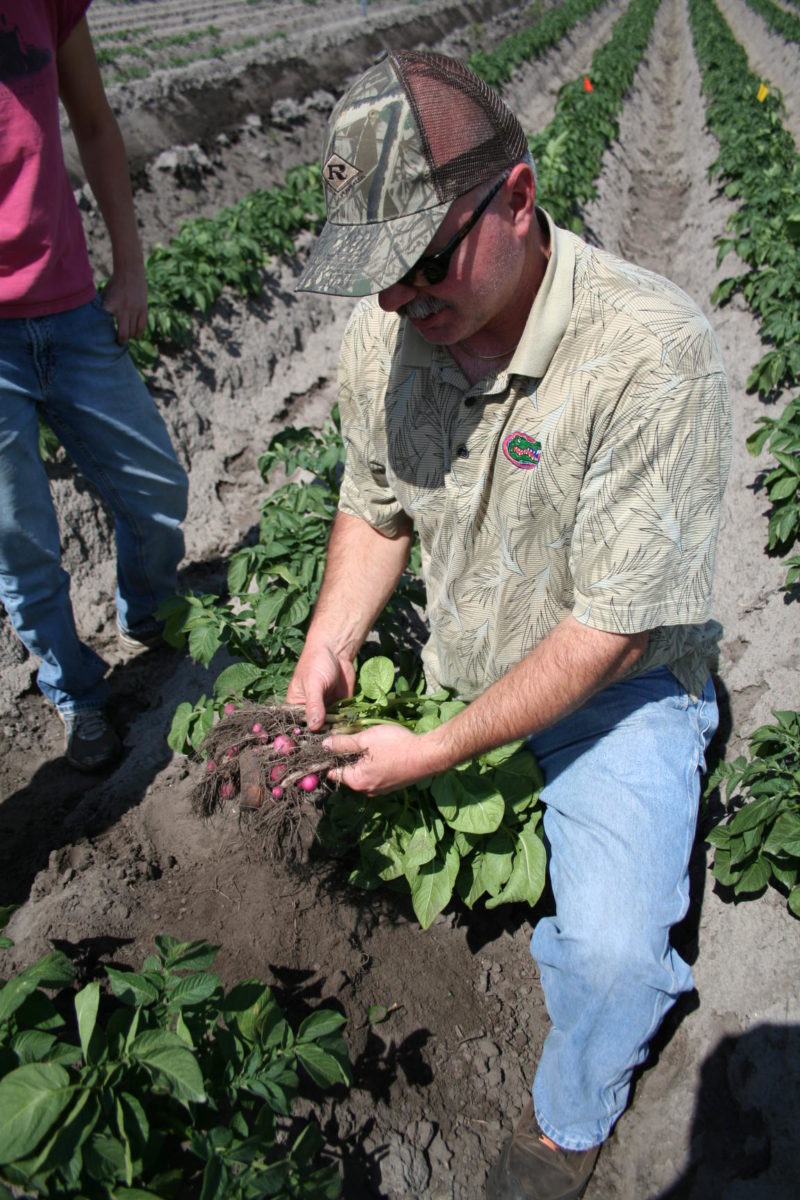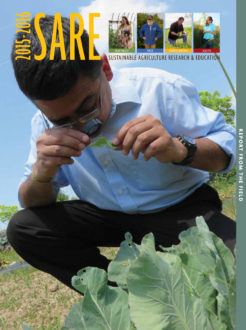SARE: ADVANCING COVER CROP RESEARCH
Thousands of Florida growers use cover crops, mainly to capture nutrients before they reach surface and groundwater, and to reduce erosion caused by heavy rains. There is less on-the-ground research, however, to demonstrate the other benefits of cover crops, notably pest control and the nitrogen contribution of legumes.

“Florida is a unique environment. A lot of the research that comes out of the Southeast applies to our growers, but not completely,” says University of Florida Associate Professor Danielle Treadwell. “There are opportunities to heighten the nutrient cycles on the farms and increase biodiversity when you add cover crops.”
Moving beyond a one-size-fits-all approach to understanding cover crops, Treadwell used a 2010 SARE grant to explore how they can help solve management issues and improve the bottom line in three production systems very representative of Florida agriculture: in row crops, vegetables and citrus. “Each collaborator walked away with a foundation and they have continued to build upon that knowledge,” Treadwell says.
Findings were shared with growers at conferences and field days around the region, giving them new options in how they use cover crops.
When Treadwell started working with Kirk Brock, he was already using cover crops on his 1,000 acres in rotation with peanuts, soybeans, corn and cotton to improve soil health and resilience to extreme weather events. “If you want to graph the yields over 10 years, using cover crops reduces the extreme ups and extreme downs from weather concerns,” says Brock.
However, Brock was still relying on purchased nitrogen fertilizer. So they conducted two years of field trials and found that legume cover crops could be combined with cereal rye, replacing fertilizer applications on subsequent corn crops. “There wasn’t a difference in yield, so the study gave farmers new options, encouraging diversification in crop rotation,” Treadwell says.
Potato farmers typically plant sorghum-sudangrass between cabbage and potato rotations to improve the soil and control nematodes, though recently the cover crop has actually been found to attract nematodes. Working with potato farmer Daniel Johns and others in the region, Treadwell tested four alternative cover crops for their ability to suppress nematodes, finding that sunn hemp worked the best.
Treadwell shared her findings with potato producers representing 80 percent of the potato acreage in Northeastern Florida, where most of the state’s potatoes are grown. Since the project, some growers have switched to a different cultivar of sorghum-sudangrass that is less attractive to nematodes, and others are exploring sunn hemp and millet as alternatives.
Similar to many organic citrus growers, weed management is a top challenge at Uncle Matt’s Citrus in central Florida. The 800-acre operation worked with Treadwell to look for a cover crop that would manage guinea grass. “Historically, citrus cover cropping is with indigo and clover, so it was interesting to work with Danielle, who helped us find another potential cover crop,” says Ben McLean III, vice president of Uncle Matt’s Citrus. Through their collaboration, McLean found the vigorously growing sunn hemp to be effective at outcompeting weeds. Going forward, the McLean family wants to figure out how much nitrogen is produced by sunn hemp and analyze the economics of planting the cover crop, information that could benefit the state’s 6,000 acres of organic citrus.
The results of this research have extended beyond the project’s collaborators to farmers in Florida and other subtropical regions as far away as Hawaii and the U.S. Virgin Islands, who are applying the findings to their own farms.
For more information, see the project reports for grant OS10-056.
Free Resources!
Grantee product: Annual Cover Crops in Florida Vegetable Systems fact sheets.
SARE topic overview: Cover Crops. Find dozens of free educational materials in this one-stop shop.
Conduct topical searches of hundreds of educational resources, including cover crops.
